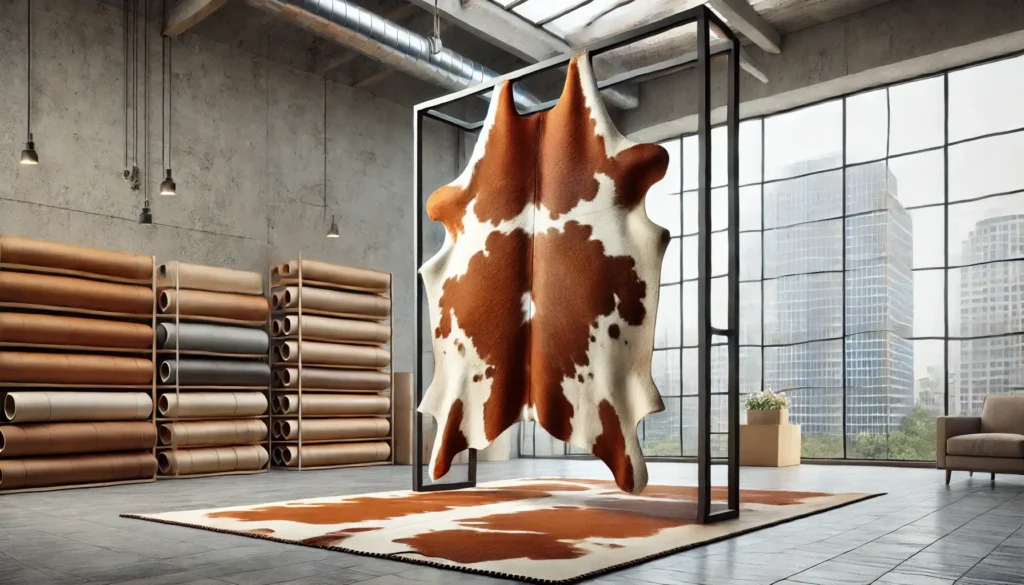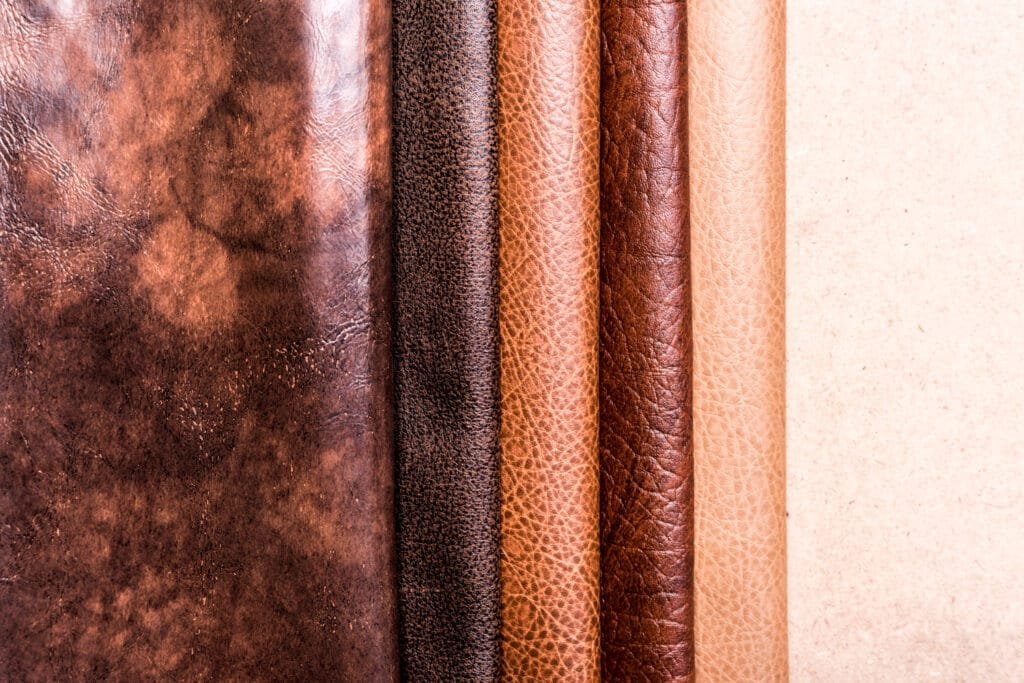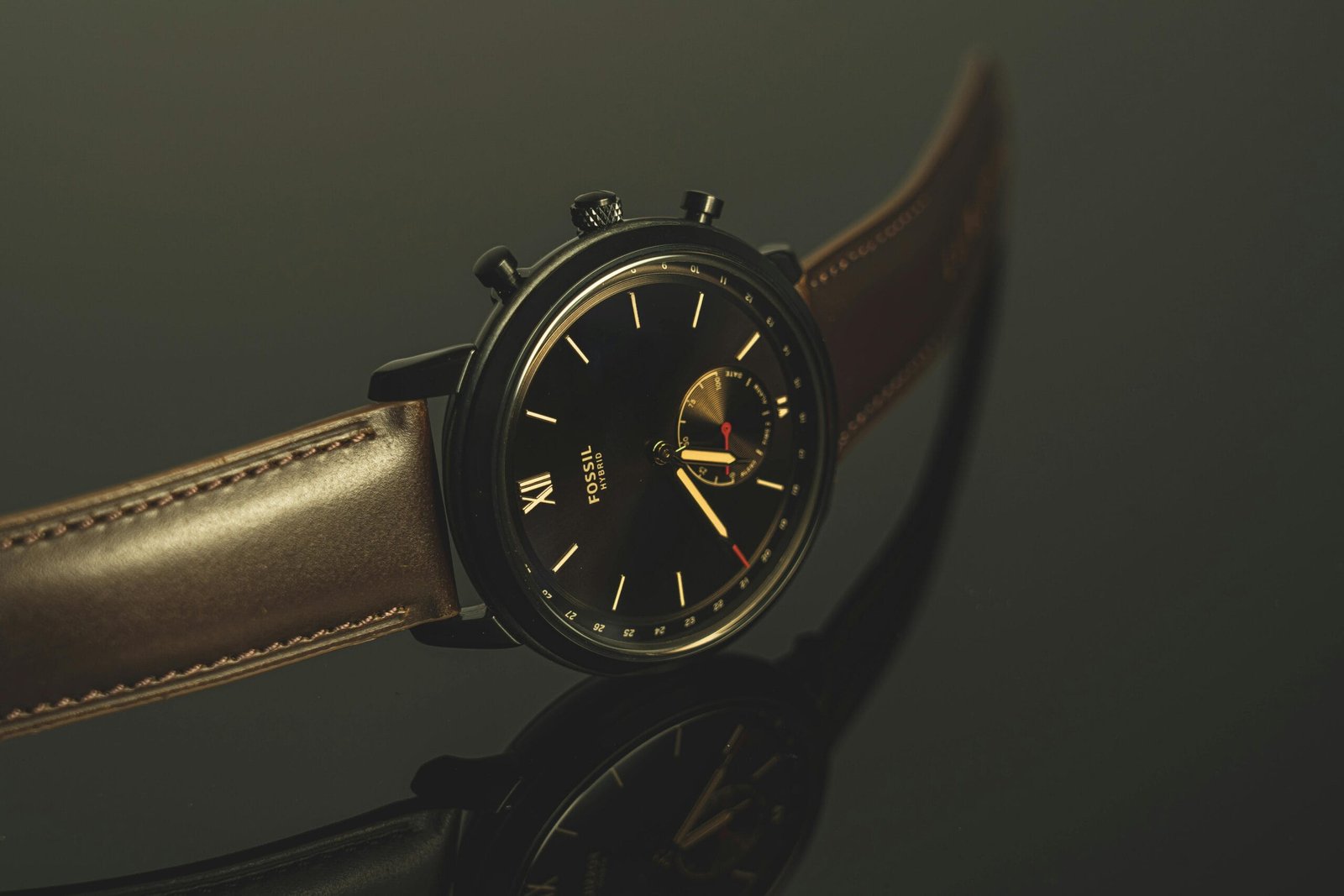Leather is a material made from animal hides. It has been used for centuries in various applications.
Leather is not just another fabric; it is a timeless material known for its durability and versatility. From ancient armor to modern fashion, leather has always been significant. It’s used in clothing, furniture, car interiors, and many other products. The process of making leather involves tanning, which preserves the hide and makes it usable.

This process can vary, affecting the quality and type of leather produced. Understanding what leather is and how it is made can help you appreciate its value. Whether you are interested in leather for fashion, furniture, or something else, knowing its origins and characteristics is essential.
Introduction To Leather
Leather is a material made from animal hides or skins. It is known for its durability and versatility. Leather has been used by humans for centuries. It plays a vital role in various aspects of life.
History Of Leather
Leather has a rich history. Ancient civilizations used leather for clothing, footwear, and tools. Evidence of leather usage dates back to prehistoric times.
In ancient Egypt, leather was used for sandals, clothing, and military gear. The Egyptians developed tanning techniques to preserve leather. This allowed them to create durable and flexible products.
During the Middle Ages, leather became essential in Europe. It was used for armor, bookbinding, and furniture. Leather craftsmanship improved, leading to high-quality products.
Importance In Human Culture
Leather has always held a significant place in human culture. It is valued for its strength and flexibility. People use leather in fashion, furniture, and various tools.
In many cultures, leather items symbolize status and wealth. Leather jackets, bags, and shoes are popular fashion items. These items are often seen as symbols of style and durability.
Leather is also important in traditional crafts. Many artisans create leather goods by hand. This keeps the tradition of leatherworking alive.
In modern times, leather remains a popular material. It is used in cars, home decor, and sports equipment. Leather continues to evolve with new techniques and uses.
Leather Production Process
The leather production process involves several key steps. Each step transforms raw animal hides into durable leather. This process combines traditional methods with modern techniques.
Tanning Methods
There are different tanning methods used in leather production. Each method affects the final quality of the leather.
- Vegetable Tanning: Uses natural tannins from tree bark. This method is eco-friendly. It produces a rich, earthy color.
- Chrome Tanning: Uses chromium salts. This method is faster and produces softer leather. It is the most common method.
- Alum Tanning: Uses aluminum salts. This method creates white, pliable leather. Often used for bookbinding.
- Brain Tanning: Uses animal brains. This method is ancient and labor-intensive. It produces very soft leather.
Environmental Impact
The environmental impact of leather production is significant. Some tanning methods are more eco-friendly than others.
- Vegetable Tanning: Uses natural materials. Less harmful to the environment.
- Chrome Tanning: Produces harmful chemicals. Requires proper waste management.
Proper waste management is crucial. It reduces the negative effects on the environment.
Here is a table comparing the impact of different tanning methods:
| Tanning Method | Environmental Impact |
|---|---|
| Vegetable Tanning | Low |
| Chrome Tanning | High |
| Alum Tanning | Moderate |
| Brain Tanning | Low |
Choosing the right tanning method can reduce the environmental impact. It is important to consider both quality and sustainability.
Types Of Leather

Leather is a durable and flexible material created by tanning animal rawhide, primarily cattle hide. Various types of leather exist, each with unique characteristics that influence their use. Understanding the different types helps in choosing the right leather for your needs.
Full-grain Leather
Full-grain leather is the highest quality leather available. It comes from the top layer of the hide, which includes all the grain. This type of leather is very strong and durable.
Full-grain leather retains the natural texture of the hide. It includes imperfections and natural marks, which add to its character. Over time, it develops a patina, enhancing its appearance.
The table below highlights the features of full-grain leather:
| Feature | Description |
|---|---|
| Durability | Extremely strong and long-lasting |
| Appearance | Natural and unique; develops a patina over time |
| Maintenance | Requires conditioning to maintain its quality |
Top-grain Leather
Top-grain leather is the second-highest quality leather. It is also made from the top layer of the hide but has the outermost layer removed. This process results in a smoother and more uniform appearance.
Top-grain leather is more stain-resistant than full-grain leather. It is often used in high-end products like furniture and accessories.
Key characteristics of top-grain leather include:
- Softness: Smooth and pliable texture.
- Appearance: Uniform look without imperfections.
- Maintenance: Easier to clean and maintain.
Both full-grain and top-grain leathers are excellent choices. The decision depends on your specific needs and preferences.
Exotic Leathers
Exotic leathers are unique and highly prized for their distinctive patterns and textures. They come from various animals and offer a touch of luxury and exclusivity. In this section, we will explore two popular types of exotic leathers: alligator leather and snake leather.
Alligator Leather
Alligator leather is known for its durability and distinct scale patterns. It is often used in high-end fashion items such as handbags, shoes, and belts. The scales are arranged in a unique pattern that makes each piece of leather one-of-a-kind.
Here are some features of alligator leather:
- Durability: Alligator leather is tough and long-lasting.
- Unique Appearance: The scales create a beautiful, natural pattern.
- Luxury: Often used in premium fashion items.
Alligator leather requires careful maintenance to keep it looking its best. Regular cleaning and conditioning help preserve its natural beauty.
Snake Leather
Snake leather is prized for its smooth texture and striking patterns. It is commonly used for accessories like wallets, belts, and purses. Snake leather can come from various species, each offering a different look.
Key aspects of snake leather include:
- Texture: Smooth and flexible, making it easy to work with.
- Patterns: Each piece has a unique, intricate design.
- Versatility: Used in various fashion accessories.
Snake leather should be handled with care. Avoid exposing it to excessive moisture and direct sunlight to prevent damage.
| Feature | Alligator Leather | Snake Leather |
|---|---|---|
| Durability | High | Moderate |
| Texture | Rough | Smooth |
| Pattern | Unique scales | Intricate designs |
| Common Uses | Handbags, Shoes, Belts | Wallets, Belts, Purses |
Both alligator and snake leathers offer unique benefits and add a touch of elegance to any item. Understanding their characteristics can help you choose the best type of leather for your needs.
Synthetic Alternatives
Leather has been a popular material for centuries. But concerns about animal welfare and environmental impacts have led to the development of synthetic alternatives. These alternatives mimic the look and feel of real leather without using animal products.
Vegan Leather
Vegan leather is a popular choice for those who avoid animal products. It is made from various plant-based materials, including pineapple leaves, apple peels, and mushroom roots.
Vegan leather can also be produced using synthetic materials like polyurethane (PU) and polyvinyl chloride (PVC). This type of leather is often more eco-friendly and cruelty-free.
| Material | Characteristics |
|---|---|
| Pineapple Leaves | Durable, flexible, and biodegradable |
| Apple Peels | Soft texture, eco-friendly, and renewable |
| Mushroom Roots | Resilient, sustainable, and natural |
Pu Leather
PU leather is another synthetic alternative to real leather. It is made by coating a fabric base with polyurethane. This process creates a material that looks and feels like leather.
PU leather is affordable, lightweight, and easy to clean. It is also available in a wide range of colors and finishes.
- Affordable: PU leather is cheaper than real leather.
- Lightweight: It is lighter than animal leather.
- Easy to Clean: Simply wipe with a damp cloth.
- Variety: Available in many colors and finishes.
PU leather is often used in furniture, automotive interiors, and fashion accessories. It offers a versatile and ethical alternative to traditional leather.
Uses In Fashion
Leather is a popular material in the fashion industry. It is durable, stylish, and versatile. Leather adds a touch of luxury to any outfit. Let’s explore its uses in fashion.
Leather Apparel
Leather apparel is timeless and always in style. It includes jackets, pants, skirts, and dresses. Leather jackets are iconic and come in various styles like biker, bomber, and blazer. They can be worn casually or dressed up for a night out.
Leather pants and skirts are bold fashion statements. They offer a sleek and edgy look. Pair them with simple tops for a balanced outfit. Leather dresses are elegant and perfect for special occasions. They come in different cuts and lengths to suit any body type.
Leather Accessories

Leather accessories are essential for completing any outfit. These include belts, bags, wallets, and shoes. Leather belts come in various designs and add a polished finish to any ensemble. They are both functional and fashionable.
Leather bags are a staple in the fashion world. They are available in many styles, such as totes, clutches, and backpacks. A good leather bag is both stylish and durable. Leather wallets are practical and sophisticated. They keep your essentials organized and add a touch of class.
Leather shoes are comfortable and stylish. They come in many forms, including boots, loafers, and sandals. Leather shoes can be worn for both casual and formal occasions, providing versatility and elegance to your wardrobe.

Home And Interior Design
Leather has been a timeless choice in home and interior design. Its durability and elegance make it a favorite for many homeowners. Leather adds a touch of sophistication to any room. It is versatile, blending seamlessly with various styles and decors.
Leather Furniture
Leather furniture is a popular choice in many homes. It offers a classic and luxurious feel. Leather sofas and chairs are comfortable and stylish. They are also easy to clean and maintain. Leather ages gracefully, developing a beautiful patina over time.
Consider a leather sofa for your living room. It can be the centerpiece of your space. Pair it with matching leather chairs for a cohesive look. Leather furniture comes in various colors. From rich browns to sleek blacks, there is a shade for every taste.
Leather Décor
Leather décor pieces can add a touch of elegance to your home. Think of leather throw pillows, rugs, and wall art. These items can complement your existing furniture. They add texture and warmth to any room.
- Leather throw pillows can be placed on sofas or beds.
- Leather rugs are durable and stylish.
- Leather wall art adds a unique touch to your walls.
Leather storage solutions are also popular. Leather baskets and boxes are both functional and stylish. They can be used to store magazines, toys, or other household items. Leather accessories like coasters and placemats can enhance your dining experience.
| Item | Function |
|---|---|
| Leather Throw Pillows | Comfort and style |
| Leather Rugs | Durability and elegance |
| Leather Wall Art | Unique and stylish |
| Leather Baskets | Storage and style |
| Leather Coasters | Protection and elegance |
Incorporating leather into your home can elevate your interior design. It is a material that combines beauty and functionality. With proper care, leather pieces can last for many years. They can become cherished items in your home.
Automotive Industry
The Automotive Industry relies heavily on durable and high-quality materials. Leather is one of the most popular materials used in various aspects of car interiors. Its elegance and resilience make it a top choice for many car manufacturers. Let’s explore how leather is used in car upholstery and steering wheels.
Car Upholstery
Leather is often used for car upholstery due to its luxurious feel and durability. It enhances the overall aesthetic of the vehicle while providing comfort. Leather seats are easy to clean and maintain. They also add a touch of sophistication to the car’s interior.
Different types of leather are used in car upholstery:
- Full-grain leather: The most durable and least processed type.
- Top-grain leather: Slightly sanded to remove imperfections.
- Corrected-grain leather: Treated and embossed to hide flaws.
Each type offers unique benefits, catering to various preferences and budgets.
Steering Wheels
Leather is also a popular choice for steering wheels. It provides a comfortable grip and enhances the driver’s control over the vehicle. A leather-wrapped steering wheel can significantly improve the driving experience.

Benefits of leather steering wheels include:
- Comfort: Soft and smooth to the touch.
- Durability: Resistant to wear and tear.
- Aesthetics: Adds a premium look to the interior.
Leather steering wheels are often found in higher-end vehicles. They are valued for their blend of functionality and style.
Leather Care Tips
Taking proper care of leather is essential to maintain its durability and appearance. Leather items can last a lifetime with the right care. Here are some effective tips to help you keep your leather in top condition.
Cleaning Methods

To clean leather, use a soft cloth or sponge. Dampen it with mild soap and water. Gently wipe the surface, avoiding excessive moisture. For stubborn stains, use a leather cleaner. Apply it with a clean cloth and follow the product instructions.
- Use a damp cloth with mild soap.
- Avoid soaking the leather.
- For tough stains, use a leather cleaner.
- Follow the instructions on the cleaner.
Storage Advice
Proper storage is key to preserving leather. Store leather items in a cool, dry place. Avoid direct sunlight and heat sources. These can cause the leather to dry and crack. Use breathable covers to prevent dust buildup.
- Store in a cool, dry place.
- Avoid direct sunlight and heat.
- Use breathable covers.
- Prevent dust buildup.
Additional Tips
Condition leather regularly to keep it supple. Use a leather conditioner every few months. Apply it with a soft cloth and allow it to absorb. Buff the leather with a clean cloth for a nice finish.
- Condition leather regularly.
- Use a soft cloth for application.
- Allow the conditioner to absorb.
- Buff with a clean cloth.
Following these simple tips will ensure your leather items remain beautiful and durable for years to come.
Future Of Leather
The future of leather is undergoing a major transformation. Innovations and sustainable practices are shaping how leather is made and used. This shift is driven by a growing concern for the environment and a push for modern, versatile applications of leather materials.
Sustainable Practices
Sustainable practices in leather production are gaining traction. Traditional leather tanning methods often involve harmful chemicals. These processes can damage the environment. Modern techniques are now focusing on eco-friendly alternatives. For example, vegetable tanning uses natural tannins from plants. This method is more sustainable and less harmful.
Another approach is the use of recycled leather. This involves repurposing old leather products. This reduces waste and conserves resources. Brands are also exploring lab-grown leather. This innovative method uses cells to grow leather in a lab. It eliminates the need for animal hides and reduces environmental impact.
Innovative Uses
Innovative uses of leather are expanding its applications. Beyond traditional fashion items, leather is finding new uses in various industries. For instance, the tech industry is integrating leather into gadgets. Phone cases, laptop sleeves, and even smartwatch straps are being crafted from high-quality leather.
The automotive industry is also embracing leather. Car interiors are being designed with luxury leather finishes. This enhances the aesthetic and comfort of vehicles. Additionally, the furniture industry is seeing a rise in leather upholstery. Leather sofas, chairs, and bed frames are popular for their durability and style.
Furthermore, leather is being used in unique ways in architecture. Leather wall panels and flooring are becoming trendy. They add a touch of elegance and uniqueness to spaces.
Overall, the future of leather looks promising. Sustainable practices and innovative uses are transforming the leather industry. These advancements are making leather more eco-friendly and versatile.

Your Attractive Heading
Frequently Asked Questions
What Is Leather Made From?
Leather is made from animal hides, primarily cowhide. It’s treated through tanning processes to make it durable and flexible.
How Is Leather Processed?
Leather is processed through tanning. This involves cleaning, soaking, and treating animal hides to make them durable and resistant to decay.
What Are The Types Of Leather?
There are several types of leather, including full-grain, top-grain, genuine, and bonded leather. Each type varies in quality and use.
Is Leather Eco-friendly?
Leather production can be eco-friendly if sourced and processed sustainably. However, conventional methods may involve chemicals and high water usage.
Conclusion
Leather is a versatile and durable material. It has a rich history. From fashion to furniture, its uses are countless. Leather provides comfort and style. It’s essential in many industries. Knowing its types and care tips helps you make informed choices.
So, next time you see leather, appreciate its value. Explore its many forms and uses. Discover how it can fit into your life. Leather remains a timeless material, blending tradition with modern needs.
Leave a Reply